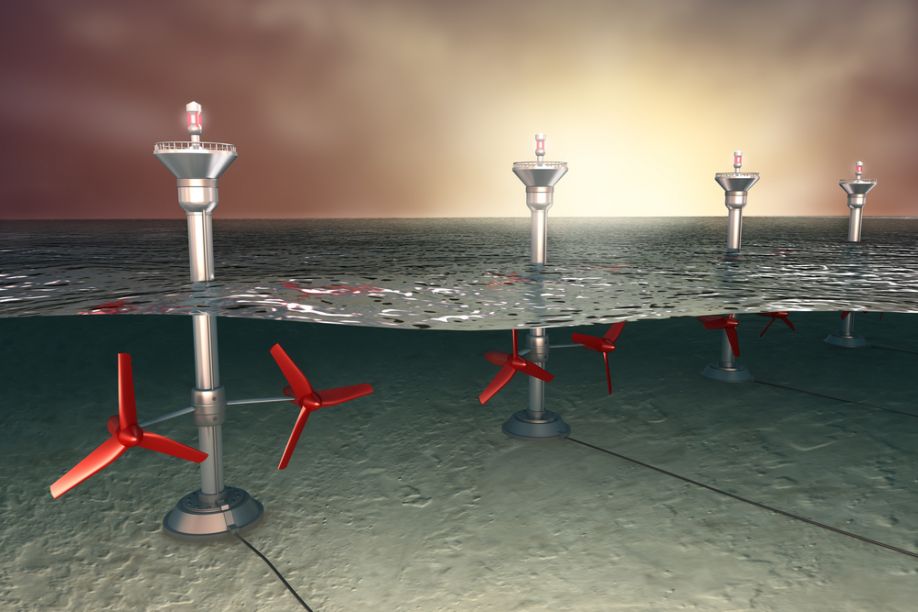3 Pros and Cons of Tidal Power Plants

When President Biden took office, he established the Build Back Better plan, providing the clean energy sector with billions in funding. The industry will expand its production and technological development using this budget, working towards carbon neutrality in America.
Tidal power plants display promising potential for climate change prevention. When the U.S. expands the quantity and diversity of energy sources in the industry, it may significantly reduce greenhouse gas emissions. Aquatic-based power production has both benefits and shortcomings, both of which affect the clean energy industry’s expansion plans.
Pros of Tidal Power Plants
Tidal power is a relatively new form of renewable energy. These production mechanisms, called barrages, function similarly to hydropower and wind turbine systems. As currents and tide levels change, a turbine on the barrage’s lower surface rotates, creating electricity.
1. Electric Grid Support
Part of Biden’s established carbon neutrality plan requires the development of clean electric grids. When supported by clean energy sources, the grid can significantly reduce atmospheric degradation, conserving the global ecosystem. Expanding tidal power production can sustain the establishment of the electric grid.
The Faroe Islands plan on utilizing tidal power plants to meet their rising energy demands. Researchers expect local power demands to increase by 250 gigawatt-hours by the next decade. Differentiations in peak flow times increase the islands’ available tidal energy.
2. Species Conservation
The U.S. can use a similar model in coastal regions, generating enough clean energy to support an electric grid. Generating electricity through tidal plants is less ecologically degrading than wind turbines. Conventional wind power sourcing is depleting the American bat population in mass numbers.
Researchers believe bats mistake turbines for trees or water sources. Collisions with wind power systems cause 888,000 bat fatalities annually. America can reduce the number of bats killed in power production by transitioning to tidal energy generation.
3. Emission Reductions
An expansion of tidal power production can significantly decrease global carbon emissions. Our conventional energy sources are fossil fuels, which generate air pollution during combustion. Renewable power produces zero emissions, conserving the atmosphere’s composition.
Unlike coal or natural gas, the shift in tides is continuous and non-depletable. As long as the ocean is moving, humanity can access clean electricity. Transitioning our energy reliance away from fossil fuels can help us become a carbon-neutral nation.
Cons of Tidal Power Plants
Like other new forms of technology, tidal power plants have their downfalls. Unfortunately, developing a sustainable electricity grid requires carbon-emitting technology. Before evaluating a sustainable solution, it is essential to examine the source’s disadvantages.
1. Resource Depletion
Developing new devices requires significant quantities of energy and natural resources. Mining for rare building materials can generate deforestation and marine pollution. Outsourcing materials can also drive environmental degradation by producing greenhouse gas emissions.
Over time, the exploitation of rare resources and outsourcing of labor can degrade preserved spaces and workers’ health. Deforestation causes soil erosion and poor air quality, compromising local community members’ well-being.
2. Non-Recyclable Materials
Like the wind power sector, tidal energy turbines create disposal challenges. Engineers produce the mechanisms from non-recyclable materials. After they reach their expiration date, workers remove turbine blades and transport them to landfills.
Disposal technicians bury the blades in shallow graves. Therefore, limited landfill space generates issues for the tidal power industry. The fiberglass and other materials rest below the surface, polluting the local soil and disrupting natural habitats.
3. Artificial Reefs and Biofouling
When installation professionals place tidal power devices in aquatic regions, marine species adapt to the invasive material. After the debris settles and surrounding habitats re-emerge, biodiversity reclaims the structure by developing it into an artificial reef. Invasive materials supporting aquatic life can benefit environmental protection.
Unfortunately, aquatic species cause adverse efficiency effects on tidal power systems. As they attach themselves to the turbine, the exterior becomes rough and prone to friction. Over time, the device’s energy production rates decrease significantly.
Adopting Diversity in the Industry
The energy sector may fully surmount tidal power plants’ disadvantages, but even right now they’re a good addition to an electric grid that requires diversity to maintain uptime and meet demand in all different conditions. Each source of power has varying pros and cons, including tidal.
By diversifying the energy industry, the U.S. can reduce its waste production while working to develop truly emission-free power. Over time, it may create a fully clean electric grid by accessing power generated from various sources.
Comments (0)
This post does not have any comments. Be the first to leave a comment below.
Featured Product

